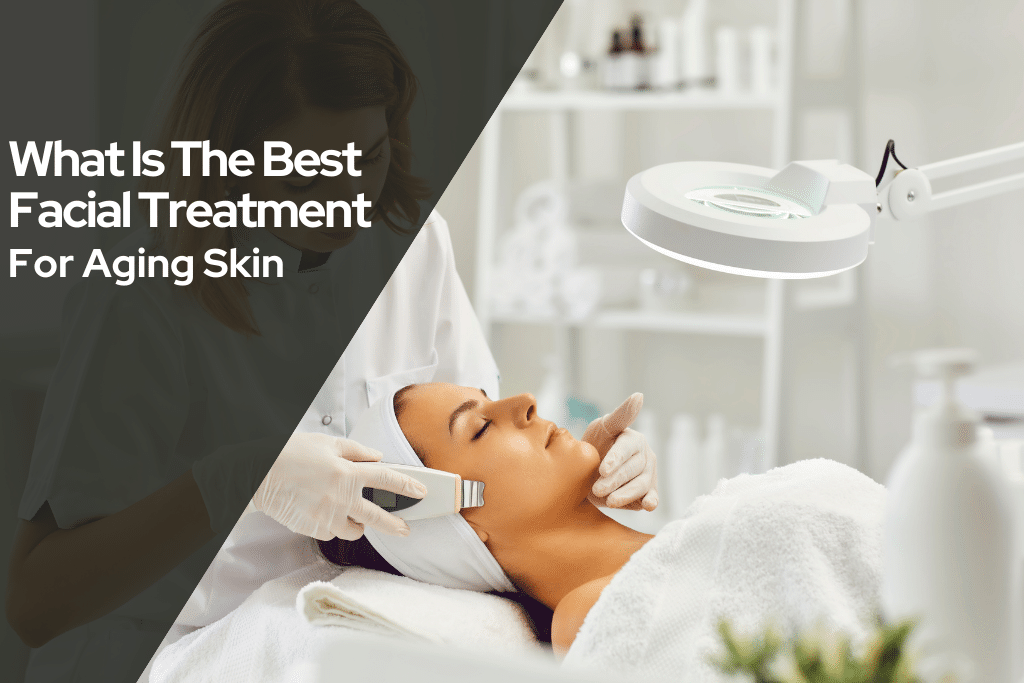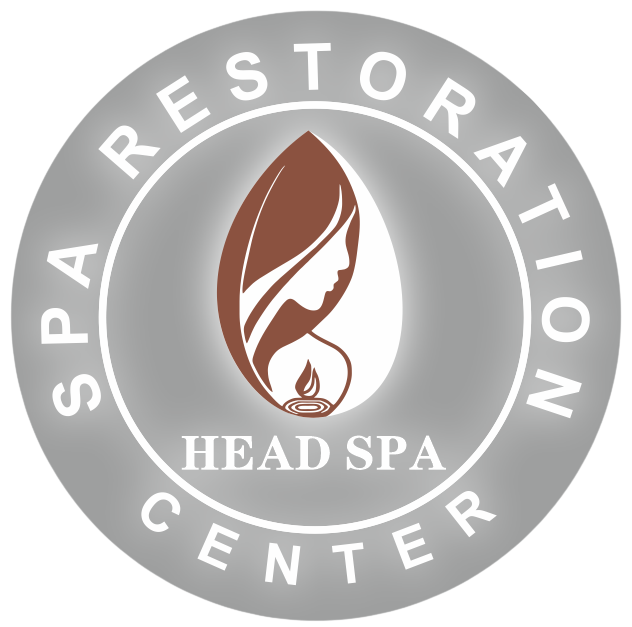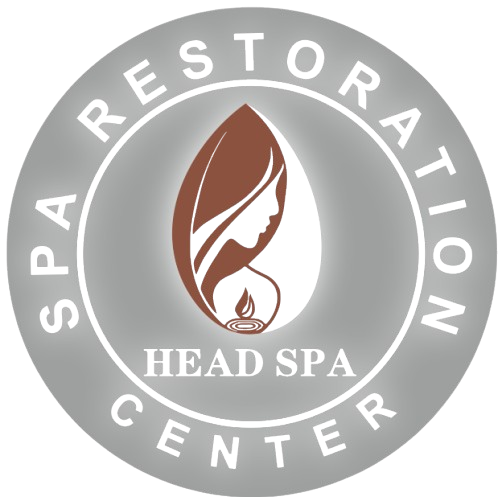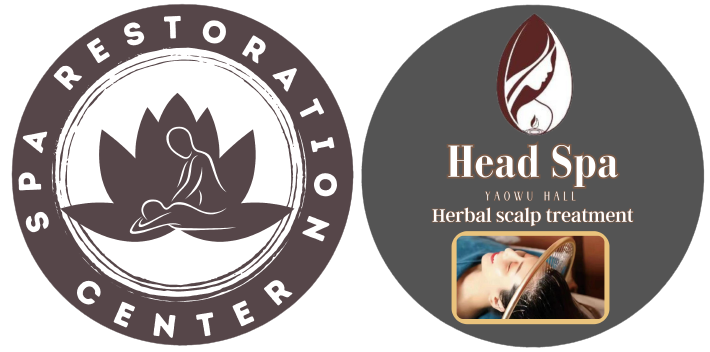
What Is The Best Facial Treatment For Aging Skin
As we grow older, the skin loses elasticity and tightness, which leads to wrinkles, fine lines, and dull skin. So, the easiest answer to “Which facial is best for aging skin?” is something many of us have been trying to find an answer to.
With so many solutions available, from microdermabrasion to Botox, it can be overwhelming for those trying to have a more youthful look. But what surgery may, in fact, leave your face looking younger, and how often should you give your aging skin a facial to treat it?
Facials are not a one-size-fits-all solution; your friend’s ideal facial may not be the best solution for your skin.
This article will focus on the best facial treatments for aging skin that specifically help treat sun damage and sagging skin. Plus, we will uncover the reality about whether or not facials are essential for all ages of skin—and how often you should get one to maintain a healthy and youthful glow.
What is an anti-aging facial?
An anti-aging facial is a specific skincare treatment aimed to resist the symptoms of aging and deliver more youthful-appearing skin. The protocols and products involved aim to enhance the skin’s overall texture and elasticity and reduce the appearance of fine lines, wrinkles, and age spots. Deep cleansing, exfoliation, and the use of anti-wrinkle serums or creams, as well as face massages to stimulate blood circulation and masks to hydrate or firm the skin, are some of the things that may be done during the treatment to achieve the desired results.
Anti-aging facials often incorporate advanced skincare solutions such as
- Advanced Technologies: Uses methods like microdermabrasion, LED light therapy, ultrasound, and chemical peels.
- Collagen & Cell Renewal: Promotes collagen production and cell renewal for revitalized skin.
- Personalized Treatments: Personalized based on the skin type and related signs of aging.
- Best Results: Formulated to deliver the best results for mature skin.
How Often Should Mature Skin Get a Facial?
Daily facials are also great for maintaining mature skin. For best effects, a facial ought to be carried out every one to three months. This regimen maintains the quality of the skin and addresses normal shifts associated with aging.
These are some of the important points to keep in mind about facials on mature skin:
Necessary Treatment: Getting Regular Facials Is Not Just a Treat; It Is the First Line of Preventative Skincare. They help maintain the skin’s overall health, reducing the need for more invasive procedures later on.
Frequency: Based on certain skin conditions, like severe acne or aging, you may need to have more frequent facials initially. After the skin is getting better, you can do it once a month or once a quarter.
Types of Treatment: Mature skin facials typically involve multiple steps: cleansing, exfoliating, and moisturizing. Each step is painstakingly designed to counter dryness and loss of elasticity — both features of older skin.
Sensitive Exfoliation: Mature skin often has slower cell turnover, so it requires gentler exfoliation. Choose sharp, effective exfoliants that are gentle enough not to irritate.
Deep Moisturization: Mature skin is often dry, and deep moisturizing treatments are key to dialing in hydration and flexibility.
Expert Advice: It’s best to come for facial sessions, along with skin experts who can help you come up with a skin care regime best suited for you.
How to Reverse Aging Skin on the Face?
There is no way to stop skin from aging completely, but there are ways to slow it down and look younger. Here are two ways to do it:
Lifestyle Habits
- Sun Protection is Paramount: Sun exposure is a major contributor to wrinkles and age spots. Make daily sunscreen (SPF 30+) your BFF, and reapply every two hours, especially outdoors.
- Hydration is Key: Drink plenty of water throughout the day to keep your skin plump and hydrated from within. Aim for eight glasses daily.
- Healthy Diet: Nourish your skin from the inside out with a balanced diet rich in fruits, vegetables, and whole grains. These foods are packed with antioxidants to combat free radical damage, a key culprit in aging.
- Sleep it Off: Aim for 7-8 hours of quality sleep each night. During sleep, your skin repairs itself, so prioritize your beauty rest.
- Manage Stress: Chronic stress can wreak havoc on your skin. Find healthy ways to manage stress, like meditation, yoga, or spending time in nature.
Skincare Routine
- Cleanse and Moisturize: Develop a consistent cleansing and moisturizing routine suited to your skin type. Cleansing removes dirt and impurities, while moisturizing keeps skin hydrated and supple.
- Exfoliate Regularly: Gentle exfoliation removes dead skin cells, revealing a brighter, smoother complexion. Aim for 1-2 exfoliations per week.
- Embrace Anti-Aging Ingredients: Look for skincare products containing antioxidants (vitamins C and E), retinol, and hyaluronic acid. These can help reduce wrinkles, improve elasticity, and boost hydration.
Consider Professional Treatments: Consult a dermatologist or esthetician for advanced options like chemical peels, microneedling, or laser treatments. These can address deeper concerns like wrinkles or sun damage.

What Is The Best Way To Tighten Aging Skin?
Achieving skin tightening may involve a combination of skincare routines, professional skin tightening, and lifestyle modifications. Here are some successful strategies:
Topical Treatments
Adding some active ingredients to your skincare routine can make a big difference in how firm your skin is. Retinoids are known to speed up cell turnover and increase collagen production, which makes skin smoother and tighter. Peptides are also helpful because they help the body make important proteins like collagen and elastin, which keep the skin flexible. Vitamin C is another important ingredient. It is an antioxidant that saves the skin from damage caused by free radicals and also boosts collagen production to make the skin tighter.
Professional Procedures
There are various skin care techniques that can assist with tightening the skin from deeper layers. Laser treatments, such as fractional CO2 and erbium laser treatments, smooth the skin and stimulate collagen production, tightening and giving the skin more elasticity. Ultrasound energy is focused in treatments such as Ultherapy and ultrasound therapy to encourage collagen formation in deeper, subdermal layers of skin without surgery. Radiofrequency treatments heat the skin’s deeper layers to cause the body to produce more collagen and elastin. This causes the skin to pull tighter over time.
Lifestyle Changes
Following are some changes in your daily habits that are really vital for maintaining a healthy face. Applying proper moisturizers on your face and drinking plenty of water can help improve the elasticity. It is a skin-good food loaded with antioxidants, vitamins, and minerals that keep your skin firm. Daily application of sunscreen to prevent skin damage from the sun is essential to prevent further deterioration of the skin and to maintain its elasticity.
Facials Essential for All Age Groups and Skin Types
Facials are beneficial for every person, regardless of age or skin type. Here is a summary of the top indications for why they are needed in different populations:
Teens
Hormonal changes can lead to increased sebum production and are a contributing factor to clogged pores and acne during adolescence. Teen facials emphasize deep cleaning and extraction to remove clogged pores. These treatments often involve a degree of light exfoliation to remove dead skin and enhance clarity of complexion. Estheticians can also help teens with good skin-care habits.
Young Adults
For young adults in their 20s and 30s, exposure to environmental variables, such as pollution and UV rays, can accelerate signs of aging, including fine lines and discoloration. Stress from work and life in general can also impact skin. These can range from antioxidant-rich treatments to help combat environmental damage to mild peels to promote skin turnover. These procedures prevent wrinkles and maintain skin pliability, keeping it healthy and resilient.
Middle-Aged Adults
Natural aging processes that happen for middle-aged adults are falling collagen production and skin pliability during their 40s and 50s. Exhilarating and hydrating facials are available during this period. Peptides, retinoids, and vitamins support collagen production and rejuvenate skin. Moisturizing treatments are a top priority to fill in the skin, smooth out wrinkles, and revitalize it.
Older Adults
Gentle care is especially important for older people age 60 and up, whose skin tends to be drier and more sensitive. Senior facials forgo all the bells and whistles, instead concentrating on deep hydration and calming agents to reduce any irritation and build up the skin barrier. These are similar to creamier masks or serums with antioxidants and essential fatty acids to recharge moisture and elasticity. So, the intention is to help your skin be healthier, more comfortable, and better textured.
All Skin Types
Facials are highly personalized and appropriate for all skin types. For oily skin, clay masks and salicylic acid can decrease oil and prevent breakouts. Facials infused with hyaluronic acid heal dry skin. Combination skin can be treated both with moisturizing and mattifying techniques to meet different facial needs. Sensitive skin requires gentle, non-irritating treatments to calm redness and irritation.

Which Facial Is Best for Aging Skin?
However, there is no best facial for aging skin; it all depends on the concerns and skin type. Here’s a guide to help you decide:
Common Aging Skin Concerns
- Fine Lines & Wrinkles: Seek out facials that boost collagen production, like microneedling facials or ones that use retinol serums.
- Loss of Elasticity: RF therapy facials or peptide-rich masks.
- Uneven Skin Tone : Chemical peels or facials with brightening ingredients, such as vitamin C, can help with age spots and hyperpigmentation.
- Dryness: Multi-step hydrating facials containing hyaluronic acid or ceramides will deeply hydrate and plump the skin.
Choosing the Right Facial:
- Consider your budget because some facials are pricier than others (microneedling or laser, for instance).
- Tolerance for downtime: Some treatments, such as chemical peels, need some downtime with potential redness or peeling.
- Skin sensitivity: If you have sensitive skin, choose a gentler facial.
Some popular facial options for aging skin
- Hydrating Facial: A great all-rounder, it provides deep hydration for a plump, youthful appearance.
- Microdermabrasion Facial: Exfoliates dead skin cells, revealing a brighter, smoother complexion.
- Chemical Peel: Removes damaged outer layers of skin, addressing wrinkles, sun damage, and uneven tone.
- Microneedling Facial: Creates micro-injuries to stimulate collagen production, improving elasticity and reducing wrinkles.
What procedure makes your face look younger?
There are two main categories of procedures to make your face look younger: surgical and non-surgical. Here’s a quick rundown of some popular options:
Non-surgical procedures
- Botox: Injections that relax muscles to reduce wrinkles, especially around the eyes.
- Dermal fillers: Fillers plump up areas that have lost volume, like cheeks and lips.
- Chemical peels: Exfoliate skin to remove dead cells and improve texture and tone.
- Laser treatments: Use lasers to target wrinkles, sun damage, and other signs of aging.
Surgical procedures
- Facelift: Tightens sagging skin and muscles in the face and neck.
- Eyelid surgery: Removes excess skin and fat from the upper and lower eyelids.
- Brow lift: Raises the eyebrows to create a more youthful appearance.
What’s the Best Way to Maintain Results After Anti-Aging Facial Treatments?
How long your facial results last depends on smart aftercare and consistency.
Here’s how:
- Follow Post-Treatment Guidelines: Stay away from the sun, strong exfoliants, and heavy makeup for a few days after treatments.
- Scheduled Maintenance: Best results are achieved with regular facials every 4–6 weeks.
- Make It a Treatment: In partnership with proper diet and sleep, facials can save your skin long-term.
- Skin Care Products: Invest in quality products that focus on the skin’s elasticity, moisture level, and protection.
Clean, routine practices and prudent advice will ensure that your youthful skin continues to shine for years to come.
Conclusion
Older skin requires extra care, and the proper face remedy can redefine the standards. There’s a variety available for every skin type and concern, from basic treatments such as microneedling to more advanced options like hydrating facials. Forgetting to do it regularly will break the cycle. Regular treatments, effective home skin care practices, and a healthy lifestyle can help you maintain youthful, healthy skin at any age.
FAQ: Facial Treatment for Aging Skin
What Are the Early Signs of Aging Skin?
The early telltale signs of aging are the ones that creep in subtly—fine lines and wrinkles, a change in skin texture, and even slight skin discoloration. These early signs of aging typically begin to show up in your 30s, but genetics, sun exposure, lifestyle, and environmental stressors can also play a role.
With aging, collagen and elastin — the proteins that give our skin its firmness and skin elasticity—break down. As these proteins break down, the skin’s appearance changes — it becomes dull, loses its bounce, and starts to sag. When it comes to facial muscle wastage and loose skin, it’s most commonly around the eyes and mouth. Detecting these changes early enables the use of anti-aging facial treatments that offer preventative care.
How Do Anti-Aging Facial Treatments Work?
Anti-aging facial treatments aim to penetrate into the level of the skin that is home to collagen and elastin. These products work to improve skin texture, restore hydration, and stimulate cell turnover to help you get younger-looking skin.
These treatments typically include exfoliation, hydration, and stimulation with the use of tools or a product/ingredient that supports skin rejuvenation. Your ideal facial rejuvenation technique targets specific skin concerns, such as age spots, fine lines, skin imperfections, and patches of dry or uneven-toned skin.
Facials promote blood flow and collagen production, which causes the skin underneath to better heal itself. Over time this creates glowing skin that’s noticeably smoother and more elastic.
What Are the Most Popular Anti-Aging Treatment Options?
The best anti-aging solution for each of us greatly depends on our skin type, age, and goals. Here are some of the best-known anti-aging treatments available, from cosmetic procedures to natural therapies:
- Hydrating Facials: Revitalize dry, aging skin.
- Retinol-Infused Facials: For elasticity and fewer fine lines
- Oxygen Facials: Infuse nutrients down into skin layers.
- Peptide Masks: Help stimulate collagen and firm sagging skin.
Depending on the degree of skin damage and whether you’re facing advanced signs of aging or more preventative care, these treatment options can be offered alone or in combination. (As always, see a skin care professional for advice tailored to you.)
Can Chemical Peels Improve Skin Texture and Tone?
Absolutely. One of the most powerful tools of the anti-aging treatment is chemical peels, thanks to their effects not only on skin texture but also on skin discoloration and skin irregularities that could be caused by aging and/or sun exposure.
A peel helps slough off damaged outer layers of the skin, encouraging new cell and collagen turnover. Light peels can address early signs of aging, whereas deeper peels go for scars, lines and wrinkles, and even marks left behind by acne or pigmentation.
They require downtime, but when combined with a facial rejuvenation procedure, the results are transformative.
How Does Laser Skin Resurfacing Help with Wrinkles and Scars?
Laser skin resurfacing is a non-surgical cosmetic treatment that delivers focused light energy to the inner layers of the skin. It removes damaged tissue and promotes new collagen formation to help both lines and wrinkles and stubborn scars.
For people concerned about an aging face, lasers can be used to create major skin tightening, even out tone, and remove skin imperfections. Fractional CO2 and erbium lasers represent some of the most effective technology for laser resurfacing and are often included in the latest aesthetic dermatology treatments.
Since laser treatments penetrate to the deeper layers of your skin, they yield longer-lasting results than many other options — even if multiple sessions are required.
What Is the Role of Microneedling in Facial Rejuvenation?
Micro Needling procedures employ micro punctures in the skin, using very small needles to create controlled micro injury. These stimulate the body’s healing process, including collagen production and tissue repair — perfect for facial rejuvenation.
Microneedling can treat scars, shrink pores, and boost the effectiveness of skincare products via increased absorption. When used alongside serums that contain peptides or hyaluronic acid, it makes the overall skin tone smoother and more even.
The result? And skin that feels firmer, looks smoother and more youthful, and gets better over time.
Are There Anti-Aging Treatments for Sensitive or Problematic Skin Types?
Yes; even sensitive or acne-prone skin can benefit from well-chosen anti-aging facial treatments. The trick is to use gentle, non-irritating formulas and techniques that soothe rather than strip.
Look for:
- LED Light Therapy: Soothes inflammation and stimulates collagen.
- Enzyme Peels: These are a less harsh option when compared to chemical peels.
- Hydrating serums: Aid in repairing barrier function in fragile skin
Though some more intensive cosmetic treatments might be too severe for sensitive skin, the right skincare professional can help you devise a regimen that promotes skin rejuvenation with minimal flare-ups.



Leave a comment